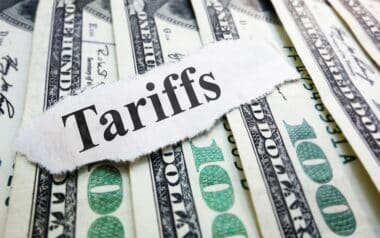US inflation remains a challenge for Federal Reserve officials, as price pressures show signs of sticking around. With consumer prices set to show another rise in February, the Federal Reserve’s cautious stance continues, despite the growing risk of tariffs under the Trump administration.
Inflation in the US continues to be a key issue for policymakers. The Federal Reserve has set an ambitious target of 2% price growth, but the latest figures suggest that cost pressures will remain elevated. This ongoing price strain is occurring at a time when the US economy is showing early signs of slowing down.
The effects of these challenges are complex and could have lasting impacts on inflation management.
Core Inflation Stays Elevated
According to Bloomberg, consumer prices in the US are expected to rise again in February, with the core Consumer Price Index (CPI), which excludes food and energy, predicted to have increased by 0.3%. While this is a slight deceleration from the 0.4% gain in January, the overall inflation rate remains a concern for the Federal Reserve.
According to Bloomberg’s economists, core CPI is expected to increase by 3.2% compared to February last year, indicating a persistent inflationary trend.
The Federal Reserve’s goal of bringing inflation to 2% is proving challenging to achieve. The central bank has previously stated that it requires “real progress” on inflation or some signs of weakness in the labour market before adjusting its policy stance.
This means that, despite February’s smaller increase in core price growth, the overall cost pressures remain high enough to keep the Federal Reserve cautious
Potential Risks From Tariffs
Adding another layer of complexity to the US situation is the threat of tariffs, particularly under policies linked to former President Donald Trump’s administration.
The Bank of Canada, for example, is expected to reduce rates if Trump’s tariff risks on Canadian goods continue. Similarly, inflation in the US could be further impacted by trade disruptions and escalating costs from tariffs, creating additional pressure on domestic prices.
This potential risk of tariffs comes at a time when the broader US economy is beginning to show signs of weakness, such as a slowdown in consumer spending and homebuilding. Should these risks materialise, the effects on inflation could be significant, complicating the Federal Reserve’s policy decisions even further.
US price pressures remain stubbornly high, and while policymakers continue to assess the situation, it is clear that the path to controlling cost increases may be longer than anticipated. The impact of tariff-related risks adds an extra layer of uncertainty, raising questions about future economic and monetary policy decisions.









